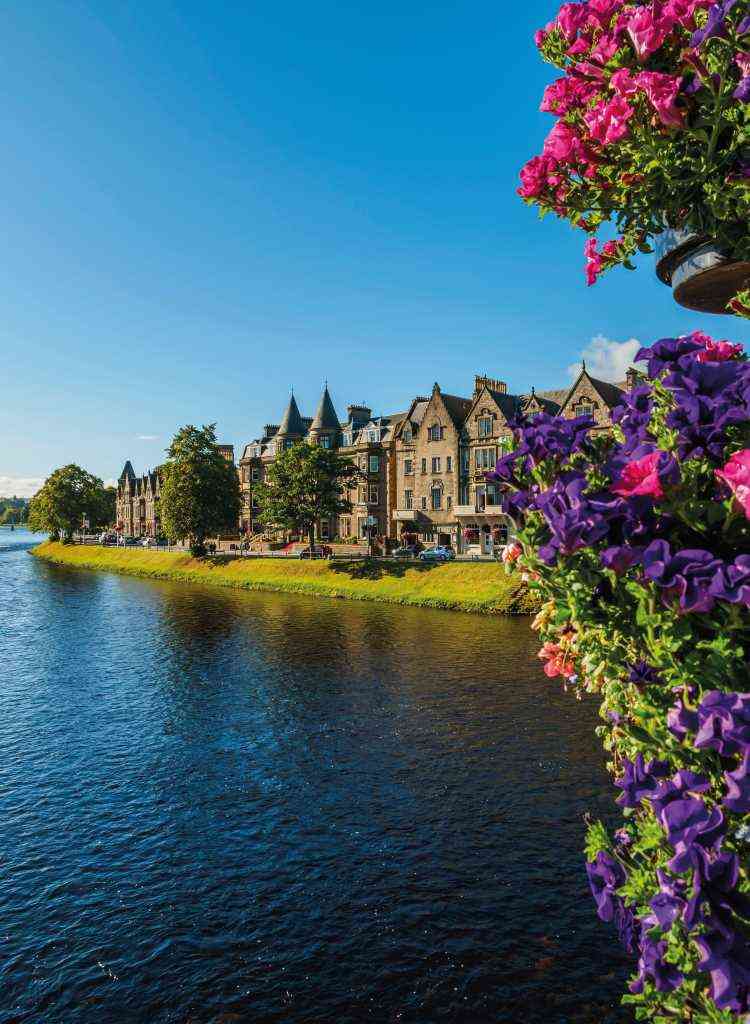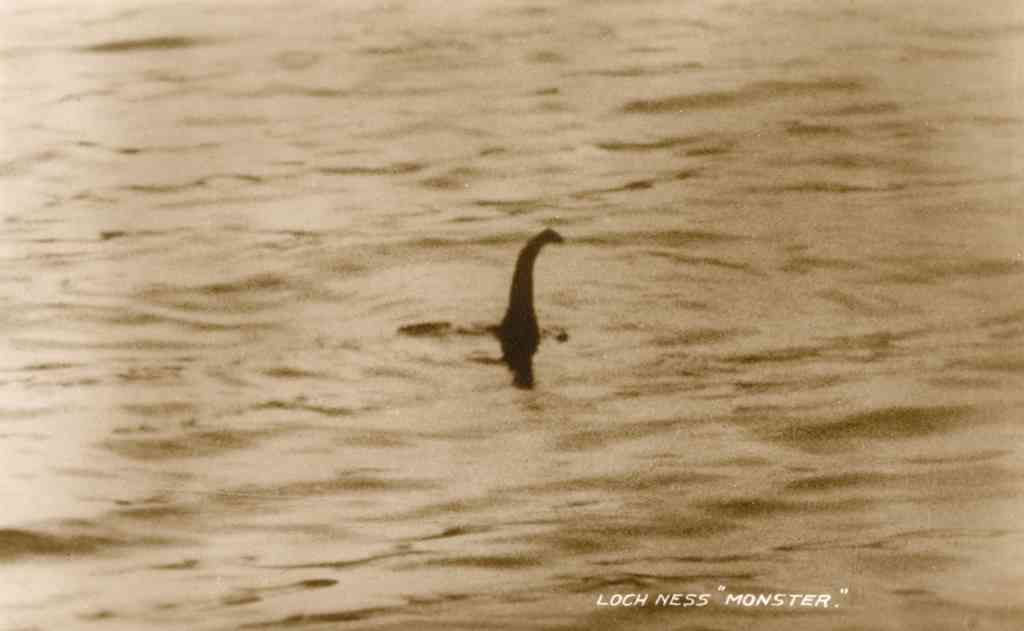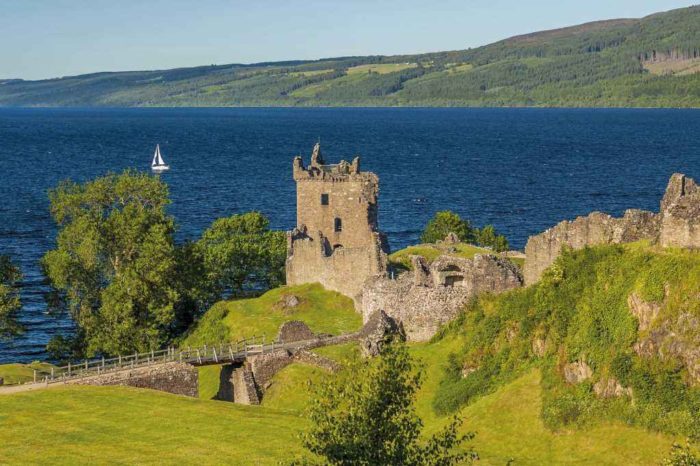Loch Ness travel guide: Monstrous depths
While the mystery of the Loch Ness monster has kept visitors coming back for generations, there’s far more to Britain’s most infamous lake as Janice Hopper discovers
Loch Ness has drawn tourists, scientists and artists over the centuries, thanks to its expansive landscape, inquisitive wildlife and engaging tales of mystical monsters. The winding roads snaking around the loch appeal to cyclists, and several trails and paths make hiking a regular past time.
Loch Ness contains more water than all the lakes of England and Wales combined; it is more than 20 miles long and reaches a murky depth of around 750 feet. Such scale makes it perfectly feasible that a great beast could, potentially, lurk in the depths. The story of the Loch Ness Monster – or “Nessie” – dates as far back as St Columba, who visited the area in the 6th century, and is reported to have seen a monster attacking a man. With a shout, St Columba sent the monster fleeing, according to his biographer, Adomnán. From that point onwards there were sporadic glimpses of Nessie, until the 20th century when sightings significantly escalated, especially in 1933 when numerous visitors and locals claimed to have spotted the beast. The now-famous image by Hugh Grey was snapped in November of that year.

There could be several reasons for this increase in Nessie reports. A new road brought more people to the area and gave a clearer line of sight directly onto the loch. But the very nature of this remarkable body of water can cause mirages. It’s so vast that, in summer, the loch’s water temperature is significantly cooler than the air around it, causing steam and potential distortion.

Scientists, too, are fascinated by Loch Ness, carrying out deep water, wildlife and geological research. Thanks to the Loch Ness Monster, explorations of this particular loch are more likely to be covered by the media, often hyped as “searches for Nessie”. Science can benefit from this furore, gaining populist coverage for in-depth research.
As well as scientists, Loch Ness has attracted curious and unexpected guests over the years. Lloyd Scott MBE holds the world record for the first “underwater marathon”, walking the length of the loch in 12 days despite experiencing an underwater landslide and a fall from a 15-foot ledge. The loch also hosted John Cobb’s water-speed record attempt in 1952. He successfully broke the record, travelling at more than 200mph, but he was killed in pursuit of his dream. A memorial to Cobb can be found at the water’s edge.
And perhaps the most dedicated monster hunter, Steve Feltham, lived in an ex-mobile-library van from 1991 onwards waiting for a glimpse of Nessie. Loch Ness is at the heart of the Great Glen, a geological fault-line known as the Great Glen Fault, which runs coast to coast, from Inverness down to Fort William. As a natural divide and an obvious transport route, power struggles in this region were frequent. Castles, strategically built as strongholds, viewpoints and garrisons, naturally bore the brunt of invasions and internal clan struggles.

Urquhart Castle is one such fortress, today a dramatic ruin standing proud on the water’s edge. With the coming of the Jacobite uprisings in the 17th century, this was a strategic focal point, becoming a base for Government forces from which to target the Jacobites in the surrounding Highland areas. When these forces abandoned the castle in 1692, they destroyed it to ensure the building could be of no further use to their enemy. Fortunately, with the advent of romanticism, a sublime ruined castle perched on the edge of a loch captured the imagination. Urquhart Castle was also in step with Queen Victoria’s attraction to wild, beautiful Scotland.
A relaxed and scenic way to enjoy the castle and the loch is aboard one of several cruises that take to the water. Many boats even offer sonar, for the more serious Nessie hunters. The Freedom Tour by Jacobite Cruises includes an hour to tour Urquhart Castle, before embarking on the return leg. Something of a north-south divide has developed at Loch Ness today. The north side is busier, offering more attractions and cafés, and relatively comfortable single carriageway roads. The south side is notably quieter, with more challenging single-track roads. This appeals to those who wish to get off grid and spend time appreciating the beauty of the loch. Horse riding is available in Dores, while the low-key Whitebridge Hotel is a popular pitstop for hikers in search of a homely Sunday lunch en route to the 140-foot waterfall at Foyers Falls.
Loch Ness is one of those rare destinations that engages everyone, from children enchanted with Nessie, to adults interested in photography, hiking and more. It combines Jacobite history, stunning scenery and the possibility of a monster sighting, ensuring it’s a perfect destination all year round, for all ages.
www.visitinvernesslochness.com
Urquhart Castle
Captured by Edward I in 1296, this prized castle changed hands between the Scots and English on several occasions, before being seized by Robert the Bruce in 1306. From that point onwards Urquhart faced attacks from the MacDonalds, the Lords of the Isles, as they attempted to widen their power base on the mainland, before the castle became the focus of the Jacobite uprisings. Though ruined today, it’s still possible to climb the Grant Tower, dating back to the 1500s, and visit the battlements, Great Hall and prison cells, and view a full-sized trebuchet. A café and visitor centre offer modern facilities in historic surroundings.
www.historicenvironment.scot
The Loch Ness Centre and Exhibition
For those who wish to digest the complete history of Loch Ness, this centre is particularly good at documenting the 500 million years of history of this mysterious stretch of water, including the many attempts to search for and find the infamous monster. Whether a visitor scoffs at the notion of the Loch Ness Monster, believes it, or is merely intrigued, this centre objectively catalogues key events on the loch, and holds curious artefacts such as the diving suit worn by Lloyd Scott when he undertook his unprecedented underwater marathon.
www.lochness.com
The Clansman Centre
At the south end of the loch, this Fort Augustus attraction unravels the truth and myths surrounding 18th-century clan life. Through colourful presentations in its 40-seat theatre, discover how the clansmen lived, fought and dressed, as well as learning about clan structure and tartans. Audience members get the opportunity to don Highland dress – the Feilidh Mhor for men, the Arisaid for women – and there’s a demonstration on how weapons, including the Lochaber axe, were used. The presentations take place within the recreated interior of a Highland turf house, adding atmosphere and authenticity.
www.clansmancentre.uk
Inverness
For city living, spend a day in Scotland’s most northerly city, just a few miles from the north end of Loch Ness. As well as the buzz of restaurants and five-star hotels, including the luxurious new Ness Walk, Inverness boasts a relatively modern, 19th-century sandstone castle and cathedral, and a rich collection of Highland artefacts and paintings in the Museum and Art Gallery. Nearby, the Culloden Battlefield and Visitor Centre
are unmissable, marking the site where the last Jacobite uprising faced its death knell. Head around the Moray Firth to visit Fort George. Following the Jacobites’ Culloden defeat, George II built this mighty fortification to suppress any further unrest. Today, one can visit the ramparts, barracks and museum, as well as explore the contrast between a calming chapel and a magazine bristling with weapons. www.visitinvernesslochness.com
South Loch Ness Trail
This 36-mile waymarked route starts in Torbreck near Inverness and invites hikers along the quieter south side of the loch, passing through the villages of Dores, Inverfarigaig and Whitebridge, taking in the Falls of Foyers, before finishing in Fort Augustus. Walkers hike a mix of minor roads, forest tracks and purpose-built trails, with highlights including Suidhe Viewpoint (a mountainous panorama at 1,200 feet), and Fort Augustus’s Caledonian Canal. If the South Loch Ness Trail sounds too easygoing, then consider the Loch Ness 360° Trail instead for a more challenging, 80-mile route that follows the entire circumference of the loch.
www.visitinvernesslochness.com, www.lochness-360.com




